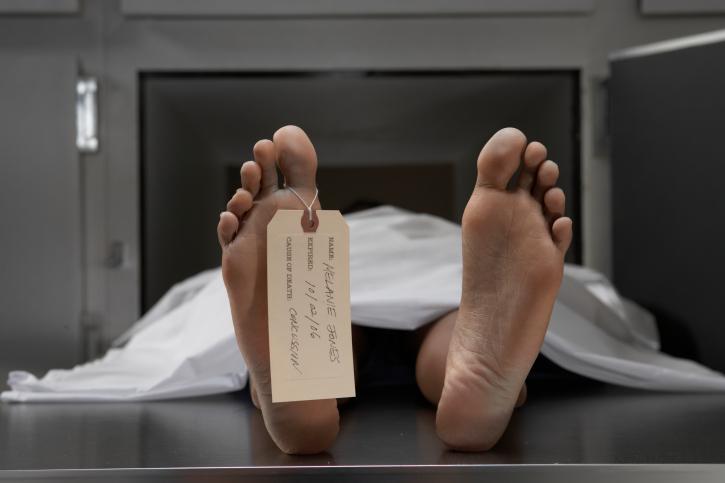
Thinkstock
As casual viewers of crime scene dramas know well, sometimes a corpse is the only information available to figure out who dunnit. And then there’s the opposite problem: "We know there's a dead body out there somewhere . . . but where the hell is it?"
Happily, the University of Tennessee’s Forensic Anthropology Center has provided us with some decidedly unique research for addressing both of these pesky crime conundrums. Researchers strew donated bodies all along a three-acre wooded field in various faux-crime scenarios to study bodily decomposition. This odd approach has earned the center the nickname “the Body Farm.” At any given time, passerby could observe bodies stuffed in cars, bagged in plastic, or decaying in hasty shallow graves.
Since its inception in the early 1980s, the farm’s obstacle course of corpses has enabled scientists to pioneer some of the most innovative techniques in forensic science—especially in pinpointing crucial crime information regarding time of death. The so-called "Body Farm" has schooled hundreds of graduate students, law enforcement agents, and scientists in the ways of rot over the last 35 odd years.
Now it stands to help find unknown mass burial sites from human rights abuses the world over.
Seeding the Farm
It all started in 1971, when forensic professor Bill Bass accepted positions teaching at the University of Tennessee and acting as the state’s forensic anthropologist. But in short order, Bass realized the muggy eastern climate—different from the relatively arid Midwestern one he came from—created corpses that were “fresher, smellier, and infinitely buggier.” (Oh my!) When state investigators starting asking Bass how long discovered bodies had been stewing, there was little he could offer.
So Bass resolved to fill the void in scientific knowledge with the grand idea of requesting land for from the University donated corpse observation. The school agreed, and a beautiful body farm was born.
The Rot Begins
To decipher the unpleasant business of what exactly happens as a body rots, Bass and his students re-created crime scenes in a whole slew of different scenarios, and then sat back to enjoy the view: How long until arms fall off a body? When does the skull start poking through the scalp? And of course, the grand-daddy of decay—how long before all the flesh is clean gone?
Besides obvious observations, like the fact that bodies decay faster in heat, researchers also found more subtle trends, including the delectable discovery that bodies rot faster in wool clothing than in cotton. (Who knew?) Oh, and then there are the bugs. The team found that blowflies descend first, and their deplorable activities (related to laying eggs in a body’s orifices and wounds) are actually very helpful in determining time of death.
Ultimately the team developed detailed timelines and statistical formulas to accurately estimate how long a given person had been dead, and Bass became a star member of investigative teams working on difficult criminal cases, from serial murders to celebrity plane crashes. Ah, the glamorous life of a body-rot watcher.
The Farm’s Global Future
One of the Farm’s most promising projects is dedicated to locating bodies and solving mysteries associated with large-scale death events. In the past, forensic scientists working with human rights groups have tried to use satellite imaging and aerial photography to find bodies, but those methods weren’t effective at locating unknown burial sites.
Instead, body farm researchers are focusing on (pricey) laser technology, which analyzes light reflections to detect where ground has been disturbed. Data from the project is just beginning to accumulate, but it could take forensic research to a whole new level.
“There are hidden graves all over the world, and a good number of them are in areas that are still dangerous,” says the project’s lead. “Being able to detect them remotely is a first step in recovering the bodies and returning them to the families—and in collecting evidence if there are going to be criminal prosecutions.”
If things go as planned, the project will assist countries trying to recover from loss, including places of genocide like Argentina, Cyprus, Bolivia, Guatemala, Uganda, Libya, Sudan and Syria.
Apparently, the body farm's targets—from rural kill-and-ditches to global mass murder—have broad appeal. So far, nearly 3,300 people from the U.S. and other countries have registered to donate their bodies for research at the center.
Perhaps it’s not the most dignified ending for one’s body, but it sure pays it forward.






